Review of the Day: Take Me Out to the Yakyu by Aaron Meshon
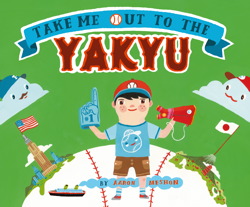 Take Me Out to the Yakyu
Take Me Out to the Yakyu
By Aaron Meshon
Atheneum Books for Young Readers (an imprint of Simon & Schuster)
$15.99
ISBN: 978-1442441774
Ages 3-7
On shelves now.
Corner a children’s librarian. Say the words “Japan” and “baseball”. Ask for picture books that involve both topics. What will you get? If I were a betting woman I’d say that nine out of ten librarians would probably hand you a book about America’s Japanese internment camps and the folks in there that played baseball to keep their sanity intact. Baseball Saved Us by Ken Mochizuki or Barbed Wire Baseball by Marissa Moss come immediately to mind. That tenth librarian might go in a different direction, though. Maybe you made it clear that you wanted something contemporary. Something that involves Japanese baseball today, but is written in a style that would engage both the very young and your older, more sophisticated seven-year-old. Until now, you would have been up a tree. Fortunately for all parties, Take Me Out to the Yakyu swoops in to save the day. Visually splendid with a text that manages to be simple without being simplistic, I look at this book and realize that while I’ve nothing else like it on my library shelves, I’d pay all the money in the world for this format to be replicated over and over again. Until that happy day occurs, let’s bask in Meshon’s gift to us.
 “I love baseball . . . in America . . . and in Japan.” The boy telling us this is a ruddy-cheeked cheery little dickens. In his left hand he holds the red jersey of a Japanese team. In his right, the blue of an American. He then leads us through what it’s like to attend a baseball game with his American pop pop in the States and his ji ji in Japan. Some differences are small. You might take a bus rather than a car to a game in Japan, or you might wear an oversized foam hand rather than toot a giant plastic horn in America. Some differences are fairly large. There’s the food, the different ways of tackling the seventh inning, and even what a fan might buy on their way out. At the heart of it all, though, is the fact that when it comes to baseball, there’s only one real way to close out the day. Lie down on your bed or your mat and think, “What a wonderful day!” A glossary of terms and an Author’s Note are included at the end.
“I love baseball . . . in America . . . and in Japan.” The boy telling us this is a ruddy-cheeked cheery little dickens. In his left hand he holds the red jersey of a Japanese team. In his right, the blue of an American. He then leads us through what it’s like to attend a baseball game with his American pop pop in the States and his ji ji in Japan. Some differences are small. You might take a bus rather than a car to a game in Japan, or you might wear an oversized foam hand rather than toot a giant plastic horn in America. Some differences are fairly large. There’s the food, the different ways of tackling the seventh inning, and even what a fan might buy on their way out. At the heart of it all, though, is the fact that when it comes to baseball, there’s only one real way to close out the day. Lie down on your bed or your mat and think, “What a wonderful day!” A glossary of terms and an Author’s Note are included at the end.
ADVERTISEMENT
ADVERTISEMENT
 When I review a book for kids I like to include some “readalikes” into the piece for folks looking for similar fare. People looking for picture books that discuss life in contemporary Japan in a style similar to Meshon’s are in luck since there are books like Etsuko Watanabe’s My Japan and Aoki by Annelore Parot out there. Baseball fans, by the same token, could enjoy Ballpark by Elisha Cooper or something a little more esoteric like The Boys by Jeff Newman. Where I get stumped is when I try to think of a picture book that takes a singular event and shows what it’s like alongside that same event in another country. The best I could come up with was Mirror by Jeannie Baker, which shows scenes of daily life in Australia on one page, and Morocco on another. Yet even with Baker’s work there was a mildly unnerving civilized vs. uncivilized vibe about the book that put some readers on edge. Amongst Meshon’s many strengths here is the fact that he really manages to make Japan familiar and unfamiliar all in the same breath. I think part of the reason it works as well as it does is that our hero has been living in both Japan and America for so long that he doesn’t find one style of life or living any better, or more surprising, than another. Japan isn’t exoticized in any way (nor, for that matter, is America). The side-by-side comparisons also have the additional advantage of being just as interesting to American child readers as it would be to Japanese kiddos. No mean feat.
When I review a book for kids I like to include some “readalikes” into the piece for folks looking for similar fare. People looking for picture books that discuss life in contemporary Japan in a style similar to Meshon’s are in luck since there are books like Etsuko Watanabe’s My Japan and Aoki by Annelore Parot out there. Baseball fans, by the same token, could enjoy Ballpark by Elisha Cooper or something a little more esoteric like The Boys by Jeff Newman. Where I get stumped is when I try to think of a picture book that takes a singular event and shows what it’s like alongside that same event in another country. The best I could come up with was Mirror by Jeannie Baker, which shows scenes of daily life in Australia on one page, and Morocco on another. Yet even with Baker’s work there was a mildly unnerving civilized vs. uncivilized vibe about the book that put some readers on edge. Amongst Meshon’s many strengths here is the fact that he really manages to make Japan familiar and unfamiliar all in the same breath. I think part of the reason it works as well as it does is that our hero has been living in both Japan and America for so long that he doesn’t find one style of life or living any better, or more surprising, than another. Japan isn’t exoticized in any way (nor, for that matter, is America). The side-by-side comparisons also have the additional advantage of being just as interesting to American child readers as it would be to Japanese kiddos. No mean feat.
Naturally when someone makes as strong a picture book debut as Take Me Out to the Yakyu, you want to know more about them. Aaron Meshon is interesting because his forays into the book world have been relatively few and far between. A RISD grad (naturally) he did some art for a Brooklyn tour guide once but beyond that I couldn’t find that he’d done much on the publishing end of things. Until now you’d be more likely to find his art in a magazine or on a mural in a Brooklyn coffee bar. His style doesn’t slot into an easy description either (I just deleted a very lame attempt to call it “Hello Kitty meets Adventure Time” which has only the barest ring of truth to it). The colors are used in a clever matter in this story as well. Blue for America and red for Japan, the contrast is killer. The consistency of the color palette is comforting and moves the reader along at a smart and steady clip. There’s the occasional oddity (I’m not sure why our hero’s speech appears as a purple speech balloon with eyeballs during one two-page spread) but it doesn’t distract much. Long story short, what we’ve got on our hands here is a true original. Don’t blink or you might miss it.
 I have a two-year-old that I have turned into a walking litmus test. It is very dangerous to use your own child as a testing ground for books that are way above their reading level/comprehension. My kid does not care about baseball. She’s only just now able to define what a basketball is. As for Japanese culture, that begins and ends with her ability to dissect a sushi roll like she was a surgeon attempting a difficult removal of a kidney stone. That said, she would sit down and listen to every last word of Take Me Out to the Yakyu. Not because the text is babyish, mind. It’s just that Meshon has a singular ability to get to the bloody point. From page one onward you know exactly what this book is about and how the author is going to format it. Then there are the ways in which the author has chosen to incorporate Japanese and American words into the text. Descriptive terms like “Fastball” and “Sokkyu” appear within the pictures themselves, adding life and color. Adults like myself will be interested in hitherto unknown facts like that the Japanese shout terms like “Do your best” at their players (I love that Meshon pairs these essentially positive shouts alongside the very American cheers of “Win! Win! Win!”). Likewise the Glossary of terms and informative section at the end that covers everything from baseball history to game length to mascots will be welcome reading for parents and gatekeepers and interesting for the occasional kid enthusiast.
I have a two-year-old that I have turned into a walking litmus test. It is very dangerous to use your own child as a testing ground for books that are way above their reading level/comprehension. My kid does not care about baseball. She’s only just now able to define what a basketball is. As for Japanese culture, that begins and ends with her ability to dissect a sushi roll like she was a surgeon attempting a difficult removal of a kidney stone. That said, she would sit down and listen to every last word of Take Me Out to the Yakyu. Not because the text is babyish, mind. It’s just that Meshon has a singular ability to get to the bloody point. From page one onward you know exactly what this book is about and how the author is going to format it. Then there are the ways in which the author has chosen to incorporate Japanese and American words into the text. Descriptive terms like “Fastball” and “Sokkyu” appear within the pictures themselves, adding life and color. Adults like myself will be interested in hitherto unknown facts like that the Japanese shout terms like “Do your best” at their players (I love that Meshon pairs these essentially positive shouts alongside the very American cheers of “Win! Win! Win!”). Likewise the Glossary of terms and informative section at the end that covers everything from baseball history to game length to mascots will be welcome reading for parents and gatekeepers and interesting for the occasional kid enthusiast.
To clarify, while I mentioned earlier in this review that there are no picture books quite like Meshon’s out there, that’s not 100% accurate. It’s true that there are no simple picture books of a kiddo living in Japan and America that compare. There are, however, books that have taken the format of two different homes brought together for side-by-side comparisons and applied it to other situations. I’ve seen this happen in books about divorce like Living with Mom and Living with Dad by Melanie Walsh, and I’m sure there are stories about visiting different grandparents, or what people do in Latin American vs. United States households. That said, for sheer appeal, Meshon stands out. Basically what you have here is a book that is so amusing that the fact that it also happens to teach interesting facts is almost beside the point. Kids will gravitate to this book because the art looks like fun, the text is really amusing, and it’s about baseball. And if they happen to learn a ton about Japanese culture along the way? Bonus. A necessary purchase then. For sports fans and seekers of multicultural fare alike.
On shelves now.
Source: Final copy sent from publisher for review.
Like This? Then Try:
- My Japan by Etsuko Watanabe
- Ballpark by Elisha Cooper
- Aoki by Annelore Parot
- Mirror by Jeannie Baker
Videos: A remarkably successful book trailer, if I do say so myself.
Filed under: Best Books, Best Books of 2013, Reviews, Reviews 2013
About Betsy Bird
Betsy Bird is currently the Collection Development Manager of the Evanston Public Library system and a former Materials Specialist for New York Public Library. She has served on Newbery, written for Horn Book, and has done other lovely little things that she'd love to tell you about but that she's sure you'd find more interesting to hear of in person. Her opinions are her own and do not reflect those of EPL, SLJ, or any of the other acronyms you might be able to name. Follow her on Twitter: @fuseeight.
ADVERTISEMENT
ADVERTISEMENT
SLJ Blog Network
One Star Review, Guess Who? (#202)
Exclusive: Giant Magical Otters Invade New Hex Vet Graphic Novel | News
Parsing Religion in Public Schools
Take Five: LGBTQIA+ Middle Grade Novels
ADVERTISEMENT

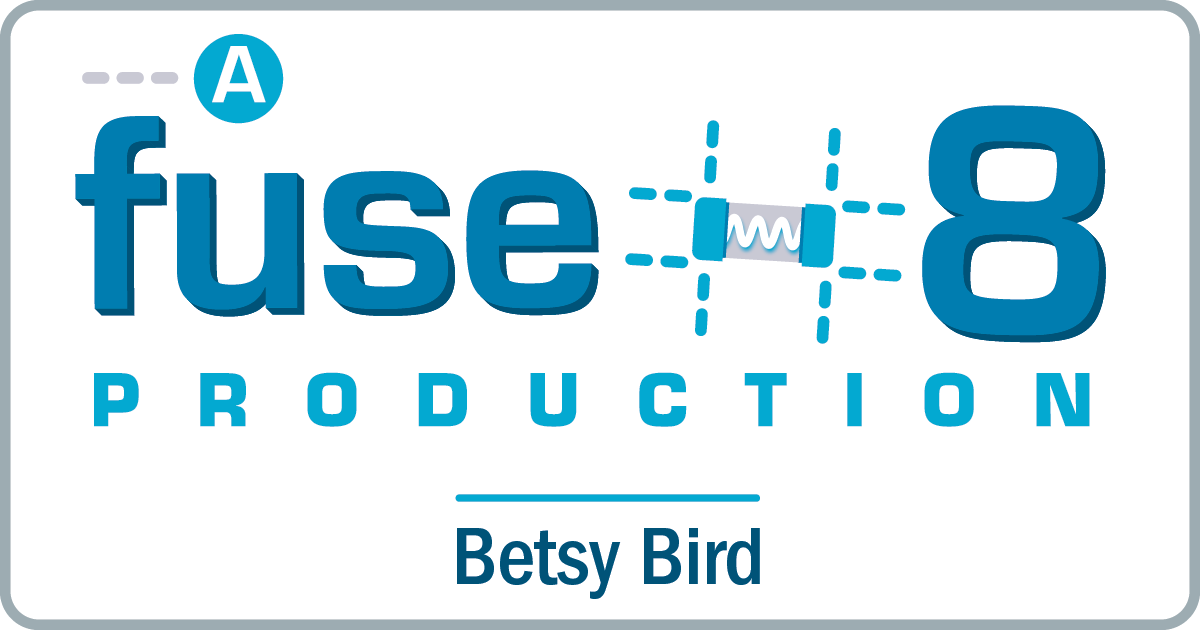

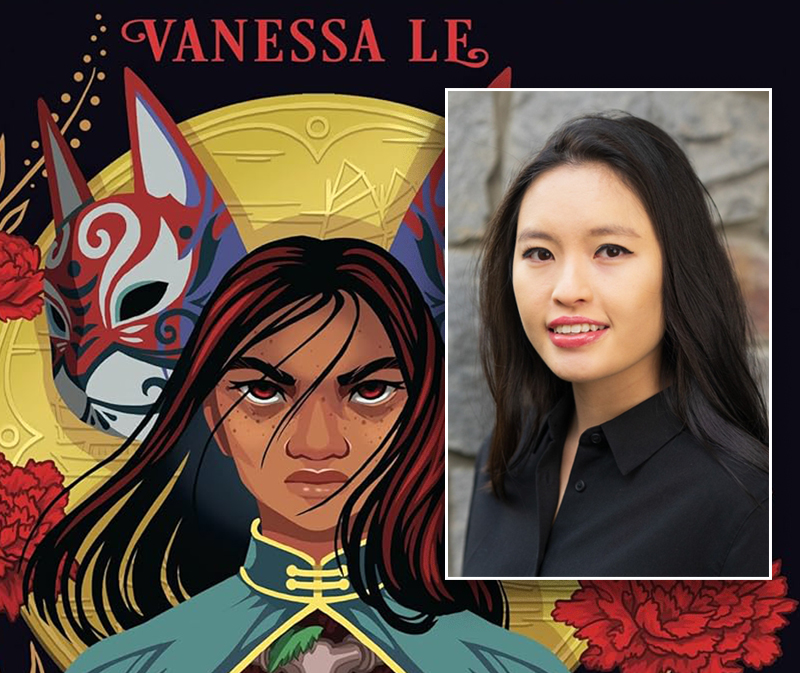
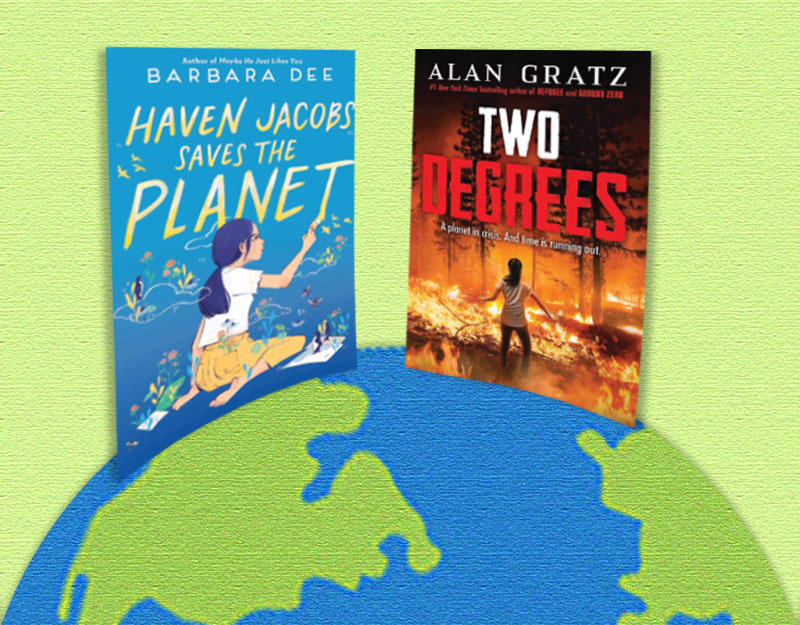
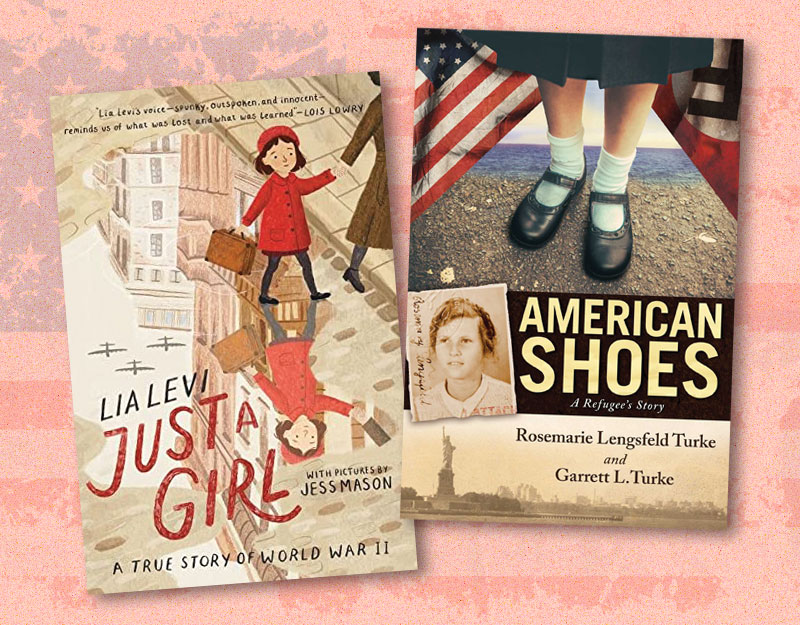

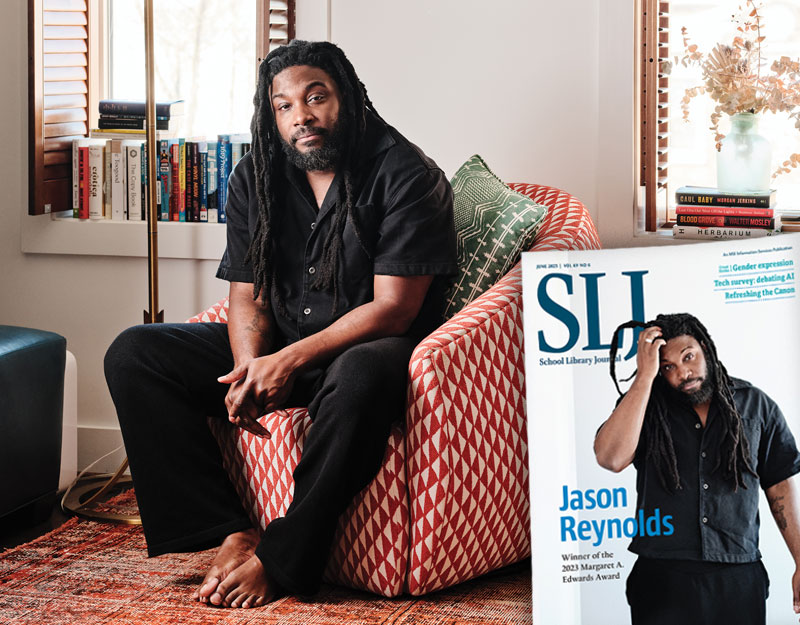
I like Take Me Out to the Yakyu very much, and it’s been popular with our patrons.
“I’m sure there are stories about visiting different grandparents, or what people do in Latin American vs. United States households.”
Betsy–two of my favorites that fall into this category are La Noche Buena: A Christmas Story by Antonio Sacre and The Tooth Fairy Meets El Raton Perez by Rene Colato Lainez. The first features a a young girl visiting her Cuban-American grandparents in Florida for Christmas, and the second involves a Mexican-American boy who has just lost a tooth. The Tooth Fairy and El Raton Perez (the mouse who collects children’s teeth in Mexico) both arrive to claim the tooth. Very clever and lots of fun.
Darn–sorry for the multiple replies. I meant to add that as someone who grew up in Louisiana, it was great to find a Christmas story that wasn’t about making snowmen and sledding down a snow covered hill, which is why I’m so fond of La Noche Buena.
Excellent! I knew there were books along these lines, but my brain was running on empty last night. Thanks for supplying the suggestions.
I’m puzzled by the reference to Jeannie Baker’s WINDOW. If one culture is shown as less “civilized” than the other, how are we defining “civilized”?
I think the specific argument with that book was that the Moroccan culture is a more stereotypical view of day-to-day life than the Australian. Not saying I agree, mind you. Rather that this was the argument I remember at the time.
How about Dear Ichiro by Jean Davies Okimoto?
And I’m cudgeling my brain–isn’t there a book illustrated by 4 illustrators (maybe Eric Carle plus others) that goes around the clock in four different venues around the world?
Black and White by David Macaulay?